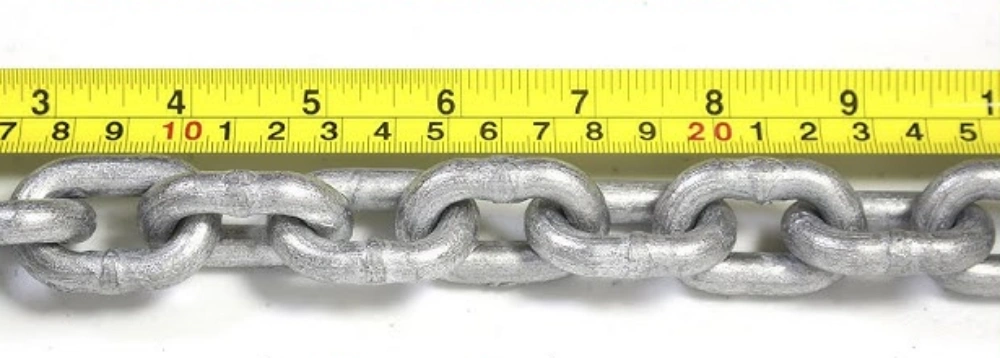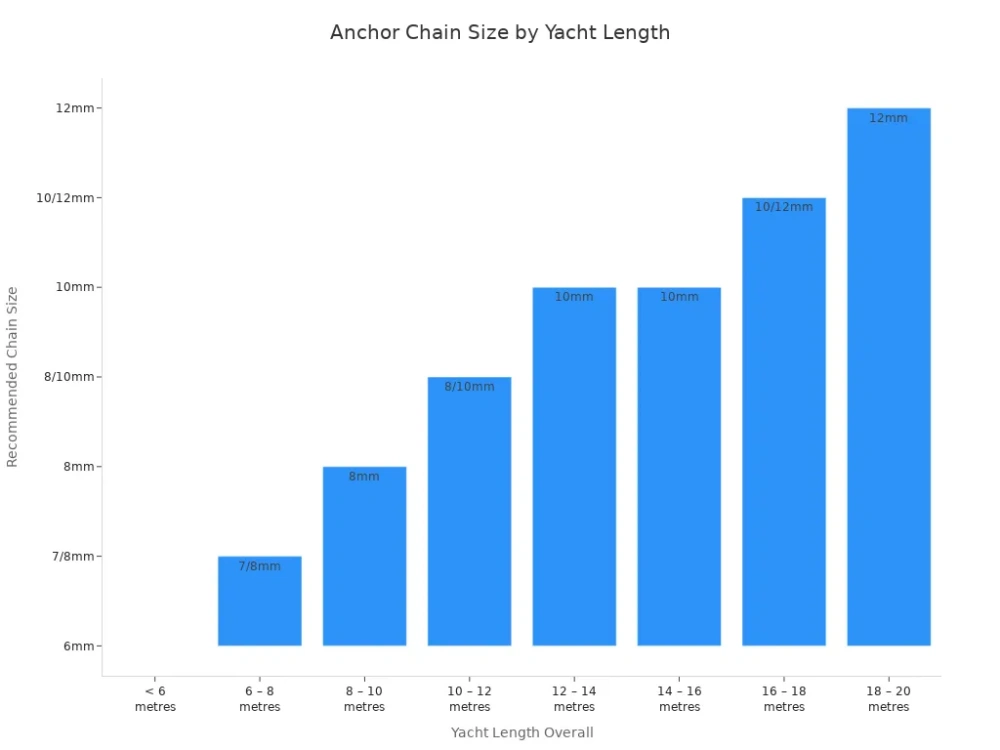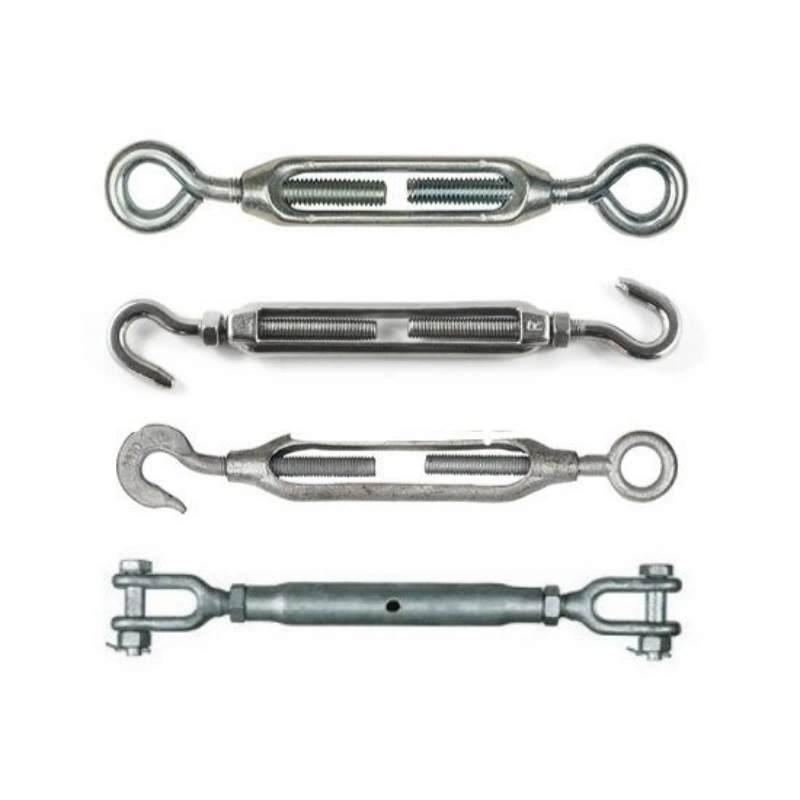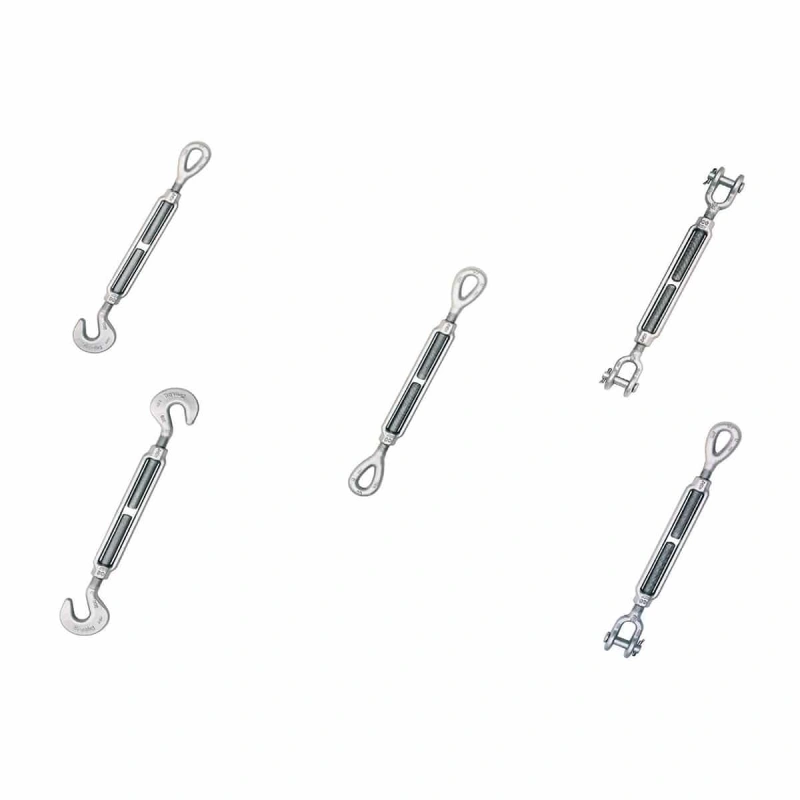Choosing the right anchor chain size starts with a simple rule: use about 1/8 inch of chain diameter for every 8 to 9 feet of your boat’s length. It’s important to match the chain size to your boat’s length, anchor weight, and the conditions you’ll be anchoring in for optimal safety.
With the right information, you can confidently select a chain that will keep your vessel secure, no matter the conditions.
Key Takeaways
Use the guideline of 1/8 inch of chain diameter for every 8 to 9 feet of your boat’s length to determine the right anchor chain size.
For maximum holding power, ensure your total anchor rode is 4 to 7 times the water depth, with a scope of 7:1 being ideal for most situations.
Select the appropriate chain material, such as galvanized for affordability or stainless steel for strength and corrosion resistance.
Always measure your anchor chain accurately when clean, and consider your boat’s storage capabilities to ensure compatibility.
Consult your boat’s manual and local regulations to determine the specific anchor chain size requirements for enhanced safety.
Anchor Chain Size Guide
Anchor Chain Sizing Basics
Selecting the correct anchor chain size is crucial for ensuring your vessel’s safety and optimal performance. You can follow several established rules and formulas to make this process straightforward.
Most boaters use the guideline of 1/8 inch of chain diameter for every 8 to 9 feet of boat length. This simple calculation gives you a reliable starting point for anchor chain sizing.
You should also consider these industry recommendations:
The total anchor rode should be 4 to 7 times the depth of the water for maximum holding power.
A scope of 7:1 is ideal for most anchoring situations. In crowded anchorages, a 3:1 or 4:1 scope may be necessary.
For boats over 25 feet, at least 6 to 10 feet of chain is recommended.
In storm conditions, use a combination of 20% chain and 80% nylon rode with a 6:1 scope.
Increase the scope to 7:1 in shallow water to help your bow ride over waves.
International marine safety standards also provide guidance:
The International Association of Classification Societies (IACS) recommends a minimum anchor chain length of 6 to 10 times the water depth.
The Royal Yachting Association (RYA) suggests a minimum of 4 times the depth.
These formulas ensure your anchor chain size matches your vessel’s needs and the conditions you expect to encounter.
Tip: Always check your boat’s manual and local regulations for any specific anchor chain size requirements.
How to Measure Anchor Chain Size?

Accurate measurement of anchor chain size ensures compatibility and safety. You can follow these steps to measure both diameter and length:
Measure your boat’s length. This gives you a baseline for anchor chain size and length.
Determine the average depth of water where you plan to anchor. Multiply this depth by your chosen scope (for example, 7:1) to calculate the minimum anchor chain length.
Assess the seafloor conditions. Add extra length if you expect rocky or uneven bottoms. You may subtract a few feet for sandy or muddy areas.
Consider your boat’s storage and handling capabilities. Adjust the chain length if you have limited space or handling constraints.
When measuring the diameter, use calipers to measure the thickness of a single link at its widest point. For length, lay the chain out straight and use a tape measure from end to end.
Note: Always measure anchor chain size when the chain is clean and free of debris for the most accurate results.
Recommended Anchor Chain Size
Major boating associations provide clear recommendations for anchor chain size based on boat length. You can use the following table as a quick reference:
Yacht Length Overall | Chain Size |
|---|---|
< 6 metres | 6mm |
6 – 8 metres | 7/8mm |
8 – 10 metres | 8mm |
10 – 12 metres | 8/10mm |
12 – 14 metres | 10mm |
14 – 16 metres | 10mm |
16 – 18 metres | 10/12mm |
18 – 20 metres | 12mm |

Powerful Machinery’s anchor chains, including both studless and stud link types, align with these industry standards. The company manufactures chains according to DIN 5685 and ISO requirements, ensuring quality and performance.
You can select from a wide range of certified anchor chain sizes, with options for custom lengths and finishes. Powerful Machinery’s products undergo rigorous testing and hold certifications from RINA, BV, and other international bodies.
This guarantees that your anchor chain size will meet or exceed the demands of your vessel and anchoring environment.
Pro Tip: If you have unique requirements, Powerful Machinery offers customization services to ensure your anchor chain size fits your specific needs.
Key Factors in Anchor Chain Selection
Anchor Chain Material Types (Galvanized, Stainless Steel)
You need to choose the right material for your anchor chain to ensure safety and durability. Galvanized chains use a zinc coating to resist corrosion, especially in moist environments. Stainless steel chains contain chromium, which gives them excellent corrosion resistance and a shiny appearance.
Stainless steel costs more but offers the strongest type of chain and is easy to clean. Galvanized chains are more affordable and last longer with proper care. The table below compares these two options:
Property | Galvanized Chain | Stainless Steel Chain |
|---|---|---|
Corrosion Resistance | Good (zinc coating) | Excellent (chromium content) |
Strength | High | Strongest type |
Cost | Least expensive | More expensive |
Durability | Long-lasting with care | Long-lasting, easy to clean |
Aesthetic | Less visually appealing | Shiny, preferred for aesthetics |
Maintenance | Zinc coating may wear off | Shows dirt and scratches easily |
Powerful Machinery offers both galvanized and stainless steel anchor chain options. You can select the material that best fits your vessel and environment.
Anchor Chain Grades and Strength
You must consider the grade of your anchor chain to match the strength requirements of your boat. Chain grades indicate the tensile strength and breaking load. The most common grades are G30, G40/G43, and G70. Higher grades mean greater strength and durability. Here is a quick comparison:
Chain Grade | Material Type | Breaking Strength (lbs) |
|---|---|---|
G30 | Carbon/Mild Steel | 7,600 |
G40/G43 | Carbon/Mild Steel | 11,600 |
G70 | Heat-Treated Steel | 18,800 |
G30: Low tensile (300 MPa)
G40: Medium tensile (400 MPa)
G70: High tensile (700 MPa)
Powerful Machinery manufactures anchor chains in multiple grades, meeting international standards like ISO and DIN. You can request custom grades for special projects.
Chain Calibration and Compatibility
You need to ensure your anchor chain matches your windlass and anchoring equipment. Calibration refers to the precise measurement of chain link dimensions. Proper calibration guarantees smooth operation and prevents jamming.
For example, a 120mm Grade 2 chain supports a windlass continuous pull of 61.2 tonnes and a maximum vertical lift of 5 shackles. International standards such as DIN766 and ISO4565 allow small tolerances in link dimensions, ensuring compatibility.
Tip: Always check your windlass specifications before purchasing a new anchor chain. Powerful Machinery provides certified chains with precise calibration and offers customization to fit any anchoring system.
Anchor Chain Length and Scope
How Much Anchor Chain Do You Need?
You must determine the right length of chain for safe anchoring. The scope ratio is the most important factor. Scope means the ratio of anchor rode (chain plus rope) you let out compared to the water depth. Most experts recommend a scope of 7:1 for overnight anchoring or rough conditions.
This means you should let out seven feet of rode for every foot of water depth. For calm conditions or short-term stops, a scope of 4:1 may be enough.
Minimum scope for secure anchoring is about 5:1. Seven to one is better where you have the room.
Here is a quick reference table for scope ratios:
Condition | Recommended Scope Ratio | Example for 10m Depth |
|---|---|---|
General Cruising | 8:1 | 80m rode |
All-Chain Rode | 4:1 | 40m rode |
Larger boats need more chain. A common guideline is one foot of chain for every foot of boat length. For smaller boats, experts suggest at least 5 to 10 feet of chain to ensure effective anchoring. Powerful Machinery offers custom lengths to match your vessel and anchoring environment.
Practical Tips for Chain Length
You can avoid common mistakes by following these tips:
Always calculate the correct scope before deploying your anchor.
Consider environmental factors such as seabed type and current strength.
Use the right anchor for your conditions to prevent anchor failure.
Secure the anchor line to avoid drifting.
In crowded anchorages, adjust your scope to reduce the risk of collisions.
For general anchoring, a scope of 7:1 is recommended. For calm conditions or short-term anchoring, a scope of 4:1 may suffice. For overnight anchoring or rough conditions, a scope of 7:1 or more is advisable.
You should measure the length of the chain carefully and choose a custom solution if your vessel has unique requirements. Powerful Machinery can provide anchor chains in any length you need, ensuring safety and compatibility for every anchoring situation.
Anchor Chain Size Examples
What Size Anchor Chain for 21 Foot Boat?
For a 21-foot boat, you should select a chain that balances strength and manageability. Most manufacturers recommend a 7mm or 8mm chain for vessels in the 20 to 26-foot range. This size provides reliable holding power and fits most windlasses designed for boats of this length.
Yacht Length Overall | Chain Size |
|---|---|
20 – 26 feet | 7/8mm (approx. 5/16″) |
A 7mm or 8mm galvanized or stainless steel chain from Powerful Machinery ensures durability and corrosion resistance for coastal and inland waters.
What Size Anchor Chain for 22 Foot Boat?
You should use a chain with a diameter of 7mm or 8mm for a 22-foot boat. This size offers the right balance of weight and strength, making anchoring safe and efficient. Powerful Machinery’s studless and stud link chains in these sizes meet international standards and provide peace of mind during anchoring.
What Size Anchor Chain for 25 Ft Boat?
A 25-foot boat requires a robust chain to handle changing conditions. Marine safety organizations suggest an 8mm chain for this size, especially if you anchor in deeper water or areas with strong winds. You can refer to the table below for guidance:
Recommended Chain Size | Length Recommendation |
|---|---|
7mm | Not specified |
8mm | 80m total (20m chain, 60m rope) |
30m | For deep water anchoring |
40m | For boats with more windage |
6mm | Too small for a conventional 25-footer |
Powerful Machinery’s 8mm chains offer certified strength and customizable lengths for your specific needs.
What Size Anchor Chain for 26 Foot Boat?
For a 26-foot boat, you should continue with an 8mm chain. This size ensures your anchor holds securely, even in rougher conditions. Choose a chain with a corrosion-resistant finish, such as hot-dip galvanized or stainless steel, for long-term reliability.
What Size Anchor Chain for 30 Foot Boat?
A 30-foot boat needs a minimum of 30 feet of anchor chain. You should also add nylon rope to reach a total rode length of about 200 feet for proper scope. This setup gives you flexibility for different anchoring depths and conditions.
Minimum chain length: 30 feet
Total rode length: 200 feet (chain + rope)
Powerful Machinery can supply custom chain lengths and high-grade materials to match your anchoring system.
What Size Anchor Chain for a 44 Lb Anchor?
If you use a 44 lb anchor, you should match it with an 8mm or 10mm chain, depending on your boat’s size and the anchoring environment. Heavier anchors require stronger chains to maintain safety and performance.
Powerful Machinery’s certified chains in these sizes deliver the strength and durability you need for secure anchoring.
Tip: Always confirm your windlass compatibility and anchoring requirements before selecting your chain size. Powerful Machinery’s experts can help you choose the ideal chain for your vessel and anchor combination.
Anchor Chain Types by Powerful Machinery
Studless Anchor Chain
You can rely on studless anchor chains for flexibility and ease of handling. These chains do not have a stud in each link, which makes them lighter and more adaptable for smaller vessels and recreational boats.
You will find that studless chains lie flatter on the seabed, reducing the risk of snagging on debris or obstacles. Their compact design improves storage efficiency, especially when space is limited. You benefit from lower maintenance requirements because the absence of studs enhances fatigue resistance.
Feature | Studless Link Anchor Chain |
|---|---|
Shape | No stud in the link |
Purpose | Lighter applications, fender chains, and mooring |
Proof Load and Breaking Load | Lower due to the absence of the stud |
Weight | Lighter and more flexible |
Durability | Enhanced fatigue resistance |
Maintenance | Lower requirements |
Tip: Studless anchor chains from Powerful Machinery hold certifications from BV, RINA, and other international bodies. You can choose galvanized or stainless steel options for maximum corrosion resistance.
Stud Link Chain
Stud link anchor chains serve as the backbone for heavy-duty marine operations. You should select these chains for large commercial vessels, offshore platforms, and high-stress environments.
Each link contains a central stud, which increases strength and prevents twisting under load. The heavier design delivers higher proof and breaking loads, making stud link chains ideal for cargo ships and oil tankers.
Feature | Stud Link Anchor Chain |
|---|---|
Shape | Contains a stud in each link |
Purpose | Heavy-duty applications on ships |
Proof Load and Breaking Load | Higher due to the stud |
Weight | Heavier |
Durability | Robust, suitable for extreme conditions |
Maintenance | Higher requirements due to the complex structure |
Chain Type | Typical Applications |
|---|---|
Stud Link | Large commercial vessels, offshore platforms, cargo ships, oil tankers |
Studless | Smaller vessels, recreational boats, flexible mooring systems, coastal boats, offshore renewable energy projects |
Note: Powerful Machinery’s stud link chains meet ISO 1704 standards and carry certifications from ABS, LR, DNVGL, and more. You can trust their durability and performance in demanding marine environments.
Other Anchor Chains
You have access to a wide range of specialized anchor chains from Powerful Machinery. These include adjustable anchor chains, galvanized anchor chains, high-test chains, and alloy anchor chains. Adjustable anchor chains allow you to alter their size for different water depths and boat sizes.
Galvanized anchor chains feature a zinc coating for rust prevention, making them ideal for saltwater use. High test chains use shorter links to provide greater load-bearing capacity and strength, which suits large vessels.
Alloy anchor chains combine metals for high durability and wear resistance in both freshwater and saltwater.
Anchor Chain Type | Unique Features |
|---|---|
Adjustable Anchor Chain | Versatile sizing for different depths and boat sizes |
Galvanized Anchor Chain | Zinc coating for rust prevention, ideal for saltwater |
High Test Chain | Shorter links, greater load-bearing capacity, suitable for large vessels |
Alloy Anchor Chain | High durability and wear resistance in various environments |
Lighter weight saves tonnage on smaller boats.
Increased flexibility makes handling easier in rough seas.
Compact design improves storage efficiency.
No protruding studs reduce snagging risks.
Powerful Machinery’s anchor chains carry certifications from ABS, BV, DNVGL, LR, NK, KR, IRS, CCS, and RS. You can select the right chain type for your vessel, knowing each product meets strict international standards for safety and reliability.
Conclusion
Choosing the right anchor chain size keeps your vessel safe and secure. Use this checklist for proper selection and installation:
Take accurate measurements of chain links.
Gather windlass information and test for compatibility.
Replace old chains with new ones, ensuring secure installation.
Selecting certified anchor chains from reputable manufacturers like Powerful Machinery offers key safety benefits:
Safety Benefit | Description |
|---|---|
Certified by International Bodies | Products meet strict safety standards set by global classification societies. |
Commitment to Quality | Manufacturers focus on exceptional quality and sustainability. |
HSEQ Certifications | Certifications reflect dedication to health, safety, environment, and quality. |
Consult with experts for custom solutions tailored to your needs.
FAQ
How do you determine how long your anchor rode?
You should measure the water depth and multiply by seven for a 7:1 scope. This calculation helps you decide how long your anchor rode should be for safe anchoring. Always check your boat’s manual for specific recommendations.
Tip: Longer anchor rode increases holding power and safety.
What is an anchor rode, and why is it important?
Anchor rode refers to the combined length of chain and rope connecting your anchor to your boat. You need an anchor rode to absorb shock, maintain holding power, and keep your vessel secure in changing conditions.
How do you choose the right matching line and chain size?
You should match the line and chain size to your boat’s length, anchor weight, and anchoring conditions. Matching line and chain size ensures your anchor rode performs well and fits your windlass.
Boat Length | Chain Size | Line Size |
|---|---|---|
20 ft | 7mm | 3/8″ |
30 ft | 8mm | 1/2″ |
Why does matching your rode to a windlass matter?
Matching your rope to a windlass guarantees smooth operation and prevents jamming. You should check your windlass specifications before selecting anchor rode, chain, and line sizes. This step helps you avoid costly equipment damage. How often should you inspect your anchor rode?
You should inspect your anchor rode before every trip. Look for signs of wear, corrosion, or damage. Regular checks help you maintain safety and extend the life of your anchor rode.


